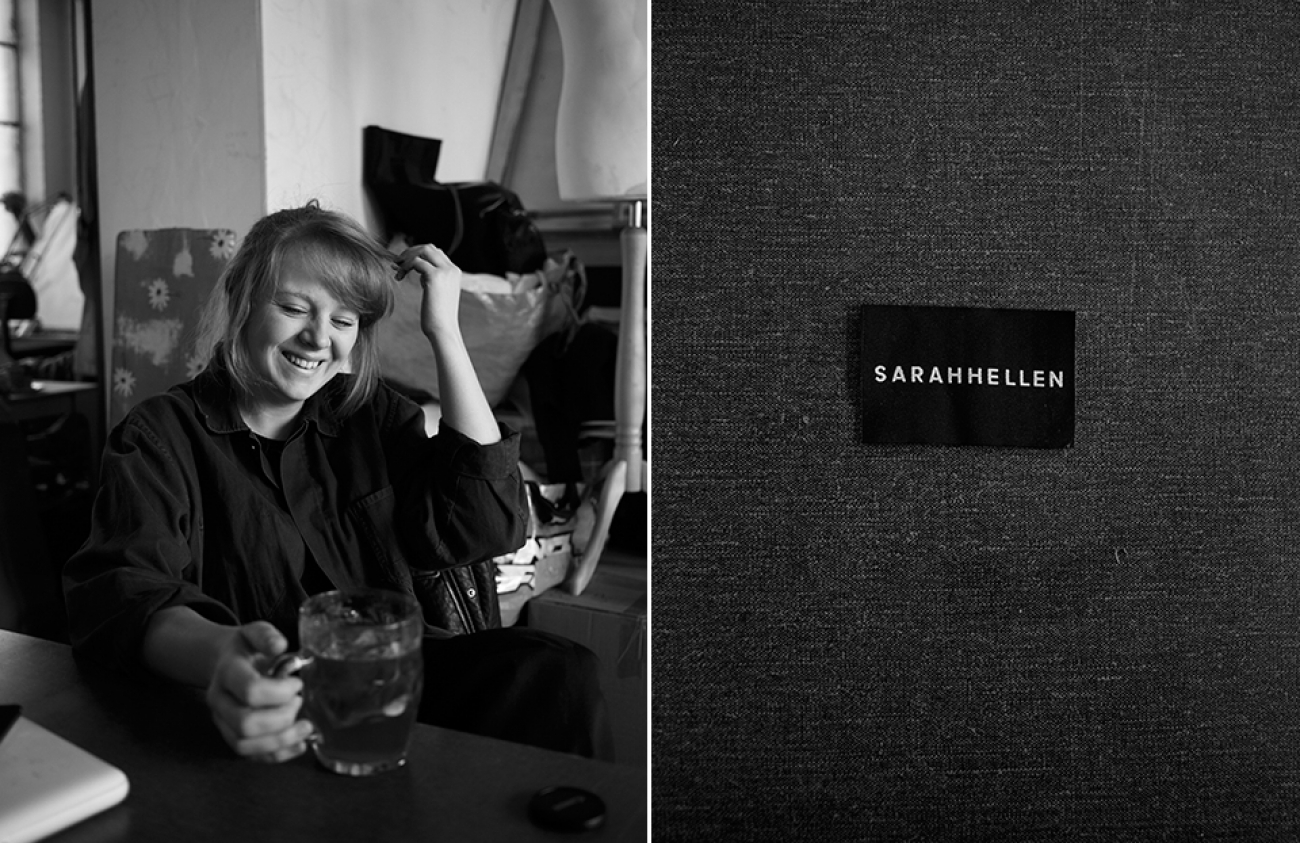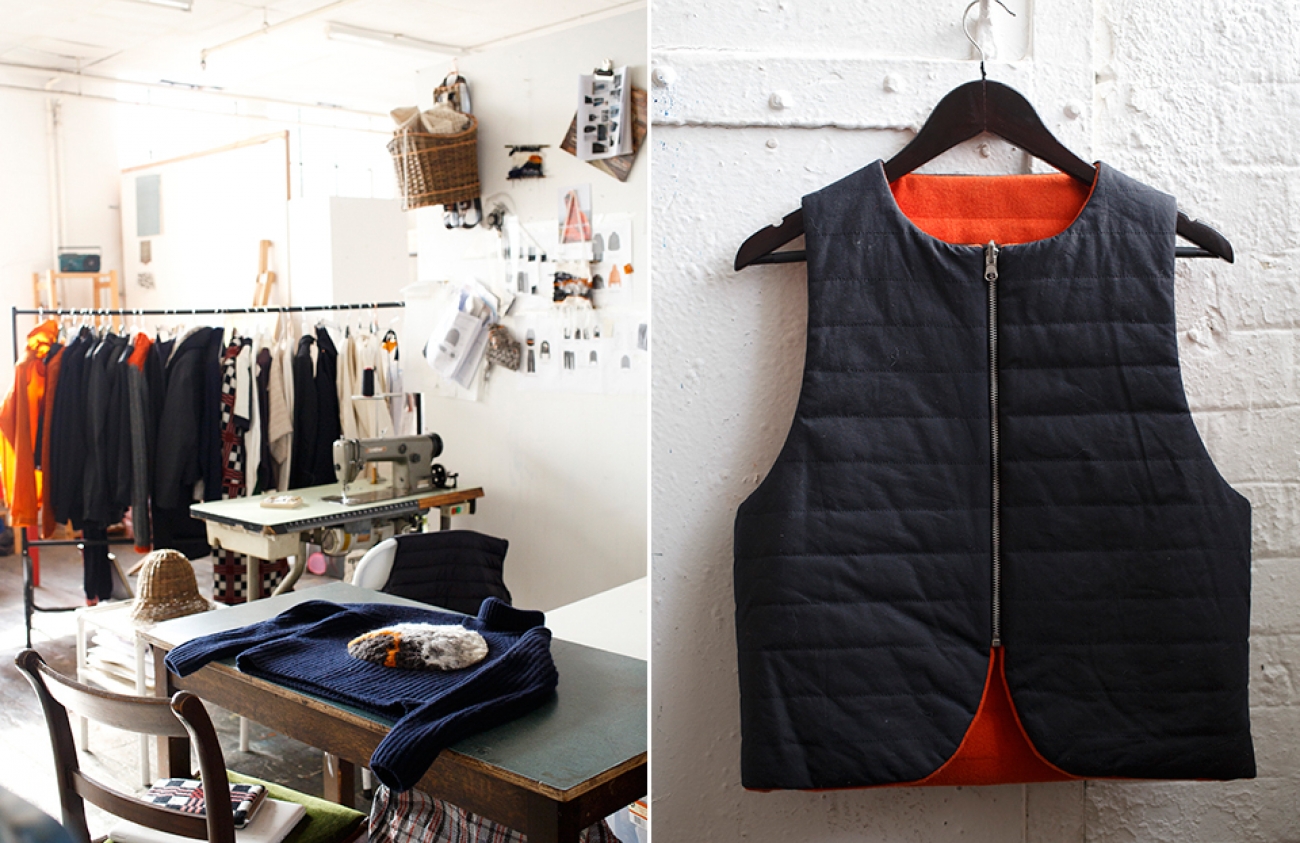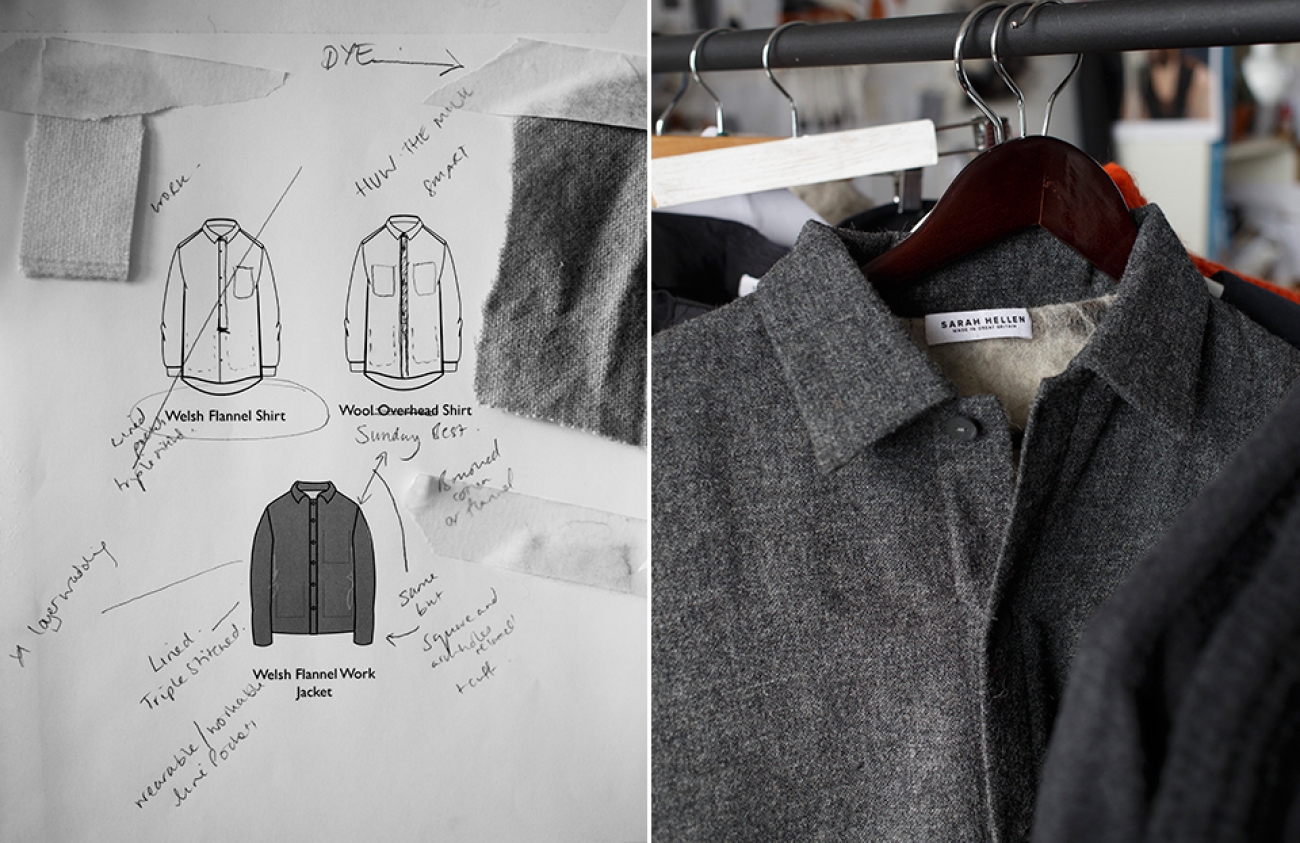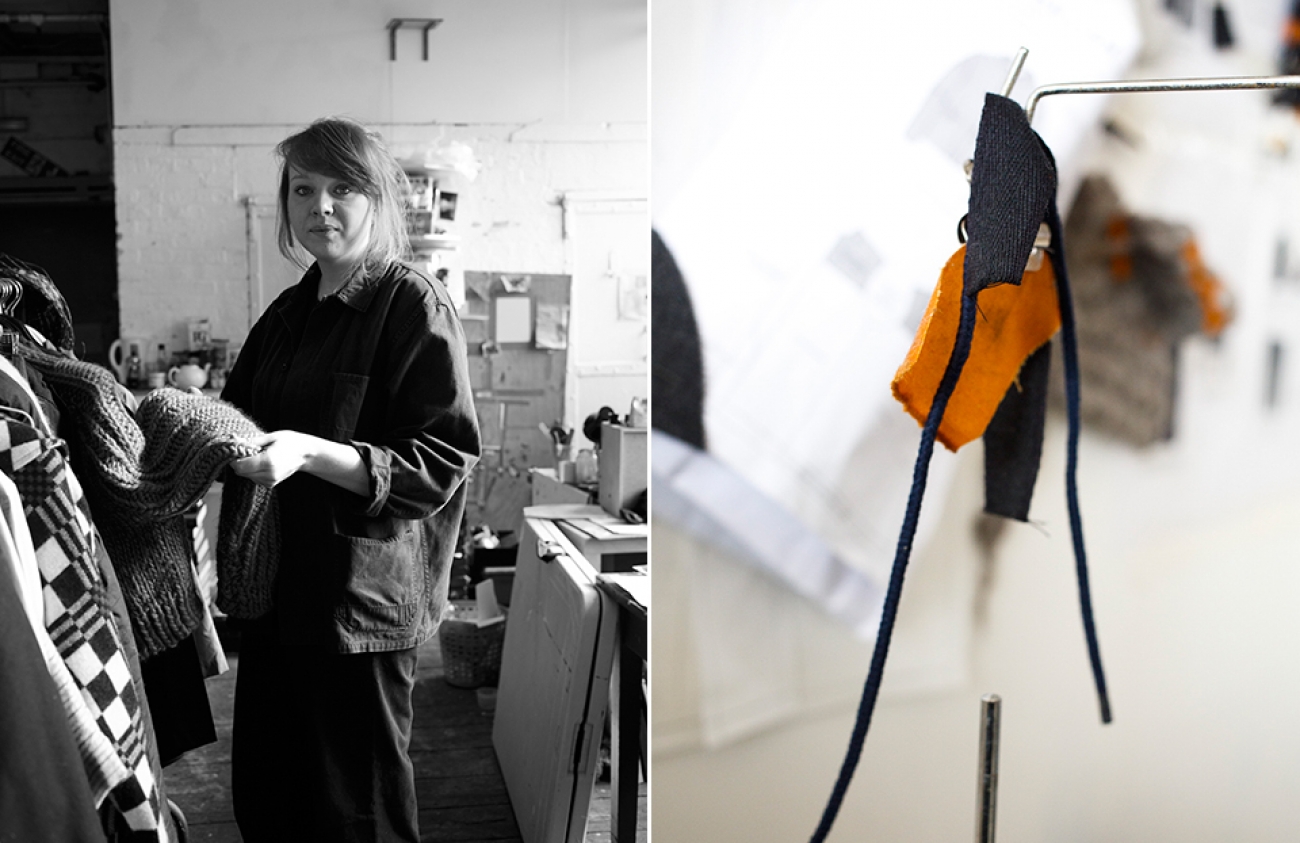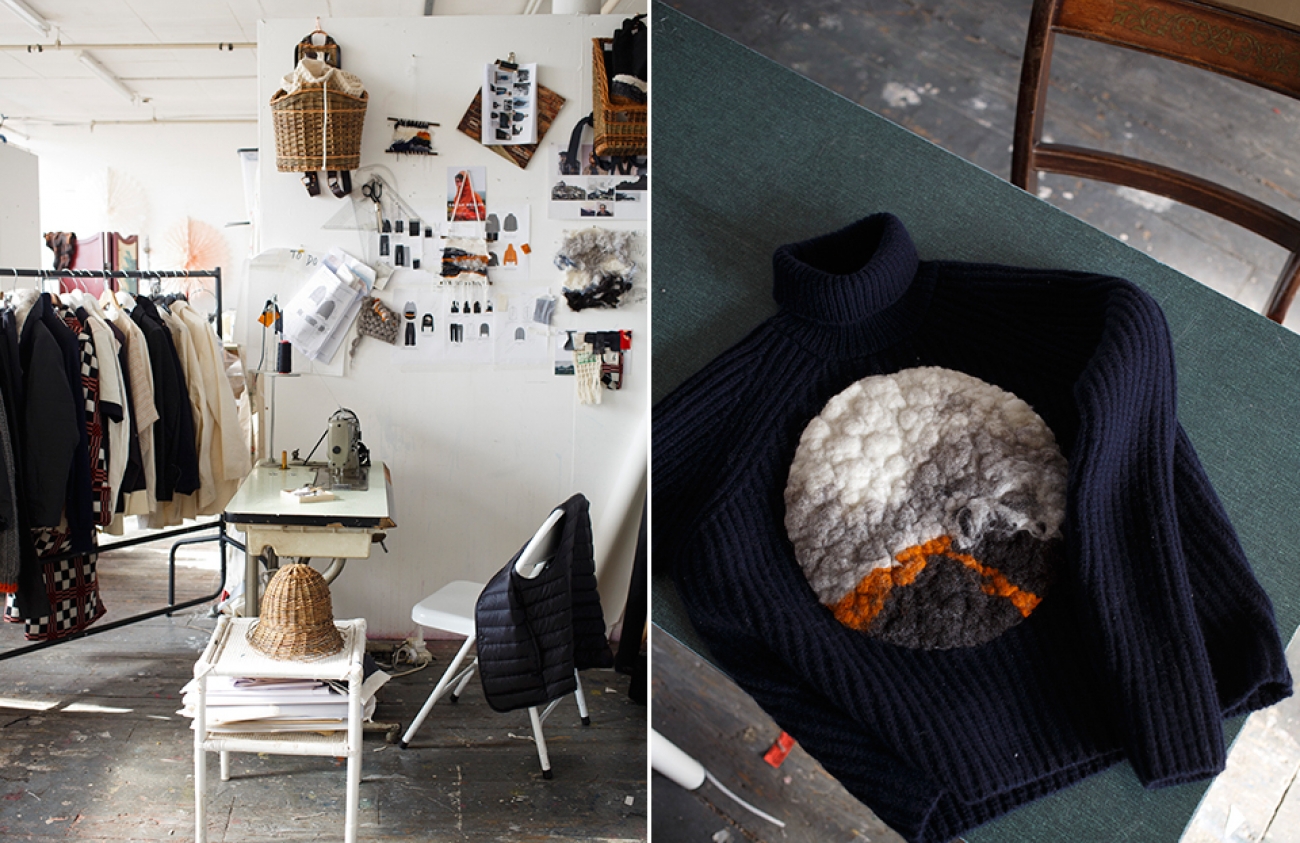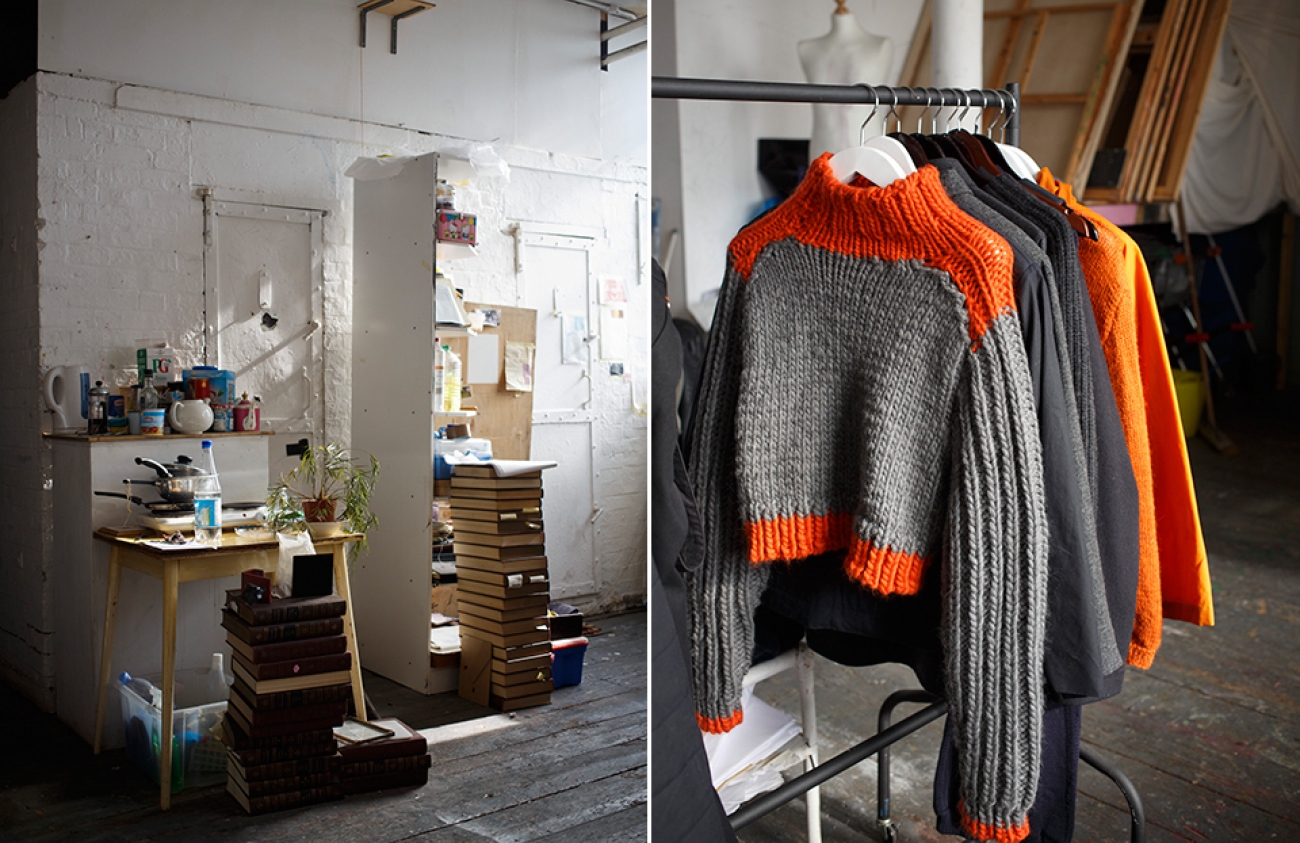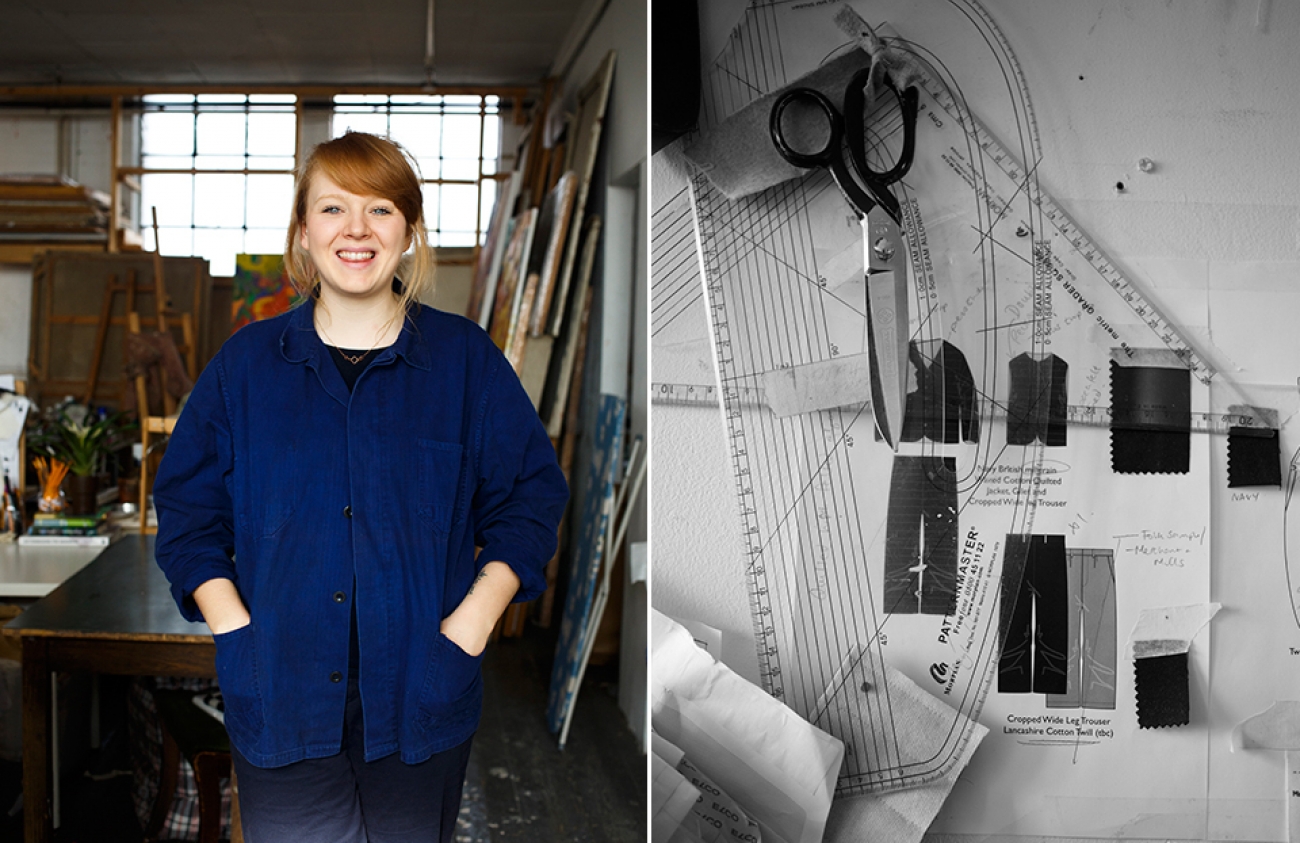There are few young designers more interested in ancestral crafts than technological advances. Fashion might be the prerogative of city dwellers, but the techniques necessary to manufacture clothes often originate from rural towns and villages where skills are inherited.
Sarah Hellen, a young woman from Wales, is photographed by
Maud Maillard as she embraces the traditional mastery of her homeland and applies it to her designs. From weaving to knitting to basketry, Sarah’s collections are elaborate, and assembled by accomplished artisans. Working with wool, flannel and mohair woven in Wales, Sarah sources her materials from sheep farmers and Welsh woollen mills, adding the notion of sustainability to her brand and an age-old, almost forgotten savoir-faire .
In June 2015 at London Collections: Men, the British Fashion Council and the NEWGEN Panel listed her as a ‘One to Watch.’ More than an acknowledgement of her effortlessly stylish design, it is a support of her brand’s core values. Thoughtful branding components are mixed with a fresh and contemporary aesthetic quite different to anything else available at the moment. Sarah Hellen’s fashion is sophisticated, sensible, and proves that focusing on how and where garments are made is nothing but laudable.
Coming from a small rural town in North Wales, what was your first contact with fashion?
I was always knitting and crocheting as a kid in North Wales. My mum was very crafty and my dad was a builder, so both of them were very practical and skillful. We were always making things with our hands, and I think this eventually made me find interest in sewing. I would love going to charity shops to find old garments that I would remake into something new to wear for myself.
What made you decide to embrace menswear?
I think menswear came naturally. I decided to specialise and choose this pathway in my second year of university; I had just realised that I much preferred it to womenswear. I think I've always been a bit of a tomboy growing up, so perhaps this is why I’m designing for men now. Menswear is about focusing more on the cloth and the details, as well as making practical clothes, which is something I really love doing.
Can you describe the Sarah Hellen style and what it means to you personally?
I would say that my collections have quite a workwear style, which reflects my family heritage. They also have a real focus on the cloth and textiles aspects. This is very important to me, and a core part of my brand. I take a lot of influence and inspiration from where I grew up in Wales, and I use a lot of local resources from where my family live. There's a wealth of textile traditions in the woollen mills, and a lot of natural resources available such as slate; so I try to incorporate these elements into my designs as much as possible. My collections are really a reflection of my own personal interests, and the influences that have surrounded me while growing up. It made total sense for me to build my brand around this, as those elements are the things I love and what to share. My aim really is to highlight the plethora of resources available in Wales that aren't used to their full extent in the menswear market.
When I first read you were from Wales, I thought of Tommy Nutter who singlehandedly revolutionized Savile Row and British tailoring in the 1960s. Has he inspired you in some ways or another?
I believe Savile Row has inspired every designer in some way or another! It is such an integral part of British history, and it’s fantastic that it is so long standing. Today Savile Row is just as important and influential as it was in the 60 years ago.
You collaborate with artisans and craftsmen in order to promote the unique savoir-faire in Wales, why was it important for you to do so? And, how did it all start?
There is such an incredible textile history, fantastic rural craftsmanship and a lot of skills in Wales. I grew up surrounded by these crafts, but I really only took a real interest in them when I was a bit older. I then became fascinated by the amount of people practising these perennial competences today and turning them into valuable businesses. These skills are timeless: basket making for instance or weaving. And, in the woolen mills, the machinery hasn’t even changed in hundreds of years. It is so refreshing to learn the processes behind each skill, especially when they have not been modernised by technology yet.
You collaborated with the DMC: does this mean the Sarah Hellen boy is dull? What was the message behind this collaboration?
[Laughs] The Dull Men's Club, to me, is a perfect representation of British eccentricity, which actually isn't dull at all. I wanted to encapsulate that British sense of humour in the everyday things we do, and this is what the club is all about. I met with the Chairman to understand the real spirit of the club; he was a great sport and appeared in our video too. It's really about having fun to be honest!
Who are the boys in your life and how much of an inspiration are they?
My Dad was a huge inspiration and will always remain one. He works so hard, and he is always doing things for other people. He's so practical and can make anything he wants. He has taught me a lot, and of course, he's my best mate.
From your AW16 collection, can you pick a piece that truly conveys your overall message?
There is a work shirt made from grey Lambswool Flannel cloth woven in a woolen mill in Wales. It has a half-lining made from felted wool, the fibre of the latter coming from my uncles’ farm. The Buttons are made from Welsh slate that I get from a man who makes amazing slate bowls and jewellery in North Wales. He cores out the slate by hand, splits it into button shapes, and then my dad drills out the two holes. I think this piece represents everything I’m trying to capture, and the kind of brand I want. That shirt brings together these well-sourced materials, craftsmen with their traditional expertise as well as my rural influences and of course the idea of locality. It becomes very personal to me.
I was glad to see that your social media feels real. It doesn’t pretend nor appear as the result of several marketing meetings. How do you approach the Instagram bubble and the way your image is represented in it?
That's kind of you to say! My brand is very much a personal project, and I want my social media to reflect that too. Instagram is a really great way of showing a snippet into the background: explaining how you work and what influences you, but also the processes you go through before reaching the end product. So, that’s really what I’m trying to do… while posting a few pictures of Tom Jones along the way!
Where do you want to see yourself a few years from now?
Hopefully, I will be living in a stone cottage in the British countryside with my loom, my design studio, and a dog!
And, who is the boy you would love to meet along the way to your countryside cottage?
Tom Jones, of course!
Words by Pierre A. M.
